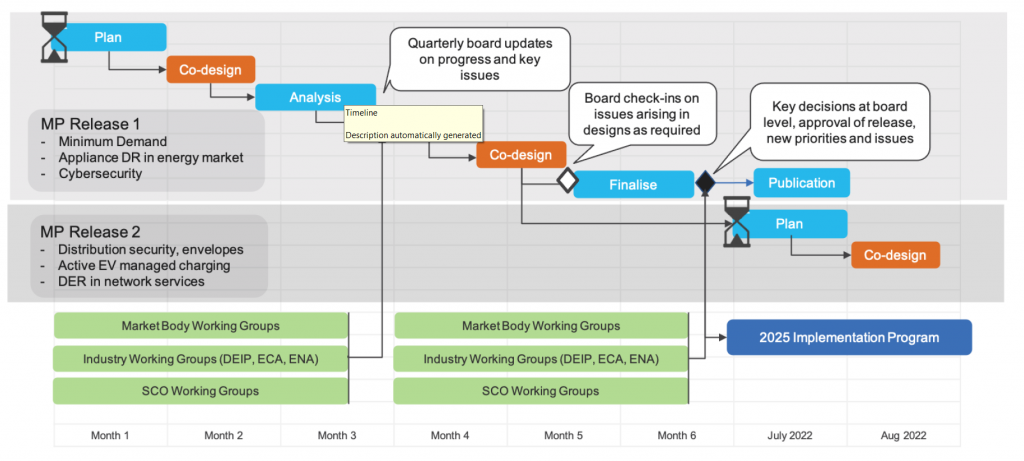Striving for maturity – can we plan a system customers actually want?
It is a scientifically proven fact that the sands of time run faster at the end – and the pilot study in the ESB’s Maturity Plan on minimum demand certainly romped home. However, there is a program of other gnarly topics for the industry to work through in the coming few years and to ensure outcomes are not lost for want of governance, we need a plan for the plan. At the end of this process, we must have a way forward to deliver the electricity system customers want.
The Energy Security Board (ESB) has been tasked with the unenviable challenge of making sure the future energy system “works”. Thankfully, the ESB doesn’t intend to deliver a “big bang” of reforms on January 1, 2025. Instead it has opted to outline a roadmap of possible regulatory reforms for consideration of governments and industry. We take a quick look the latest P2025 paper and its proposed Maturity Plan.
A summary of the P2025 paper for people in a hurry
- Resource Adequacy and Aging Thermal Generator Retirement – The ESB has proposed a series of recommendations aimed at improving market information, national harmonisation between states and the process through which generators exit the market (i.e coal fired generators retiring). The ESB supports market-led investment signals but notes possible changes to the retailer reliability obligation could be considered.
- Essential System Services – In an increasingly dynamic and variable energy system we need to find the right balance between price-responsive spot markets and minimising the number of AEMO interventions to maintain system stability. It mentions many of the existing processes underway across several topics such as fast frequency response, system strength, ramping/operating reserve and inertia.
- Integration of DER and Demand Side Participation – This section covers topics such as customer protections, potential connection points, schedule-lite and flexible trading models. Some of the proposals are very detailed and introduce a level of complexity that is new to the market. There is continued support in the paper for the two-sided market initiative and these arrangements are complementary to achieve that future.
- Transmission and Access – The ESB hopes to encourage transmission investment to enable new generation and market arrangements so that it is located and operates in a way that uses the transmission network efficiently. Initially, this is largely to be delivered through renewable energy zones.
The ESB Maturity Plan
The Maturity Plan is a roughly three-year program of six monthly “sprints” where each sprint gathers key stakeholders to work on a specific problem to help inform future industry direction through existing mechanisms such as changes to the National Electricity Rules.
But questions remain about who will administer the Maturity Plan, how it is run over the next three years and what kind of outcomes it will produce.
(Source: page 73 in the ESB P2025 A paper: https://esb-post2025-market-design.aemc.gov.au/32572/1619564199-part-a-p2025-march-paper-esb-final-for-publication-30-april-2021.pdf)
Governance for uncertainty
The plan for the plan is sometimes just as important as the plan itself. Many of the proposed reforms (particularly for DER) are specific and potential recommendations focus on four-and-a-half years into the future. A lot can change in that time (consider how much has changed in just the past two years).
Add to that, the ESB only has a few short weeks left before its term ends (unless there is an extension) and in an environment where states are increasingly setting their own policy courses without federal government harmonization, it is even more evident that a robust governance framework clearly outlining obligations, responsibilities and outcomes is needed.
Those of a certain age may be familiar with the mythical Sandman who puts people to sleep and gives them pleasant dreams, but we’re going to need more than sweet dreams to land a DER-centric electricity system that works.
As Henry David Thoreau said, “Time is like a handful of sand – the tighter you grasp it, the faster it runs through your fingers.” We hope that the sand in the ESB timer isn’t just running faster than we imagine and that we have the plan for the plan framed in a few short weeks.




